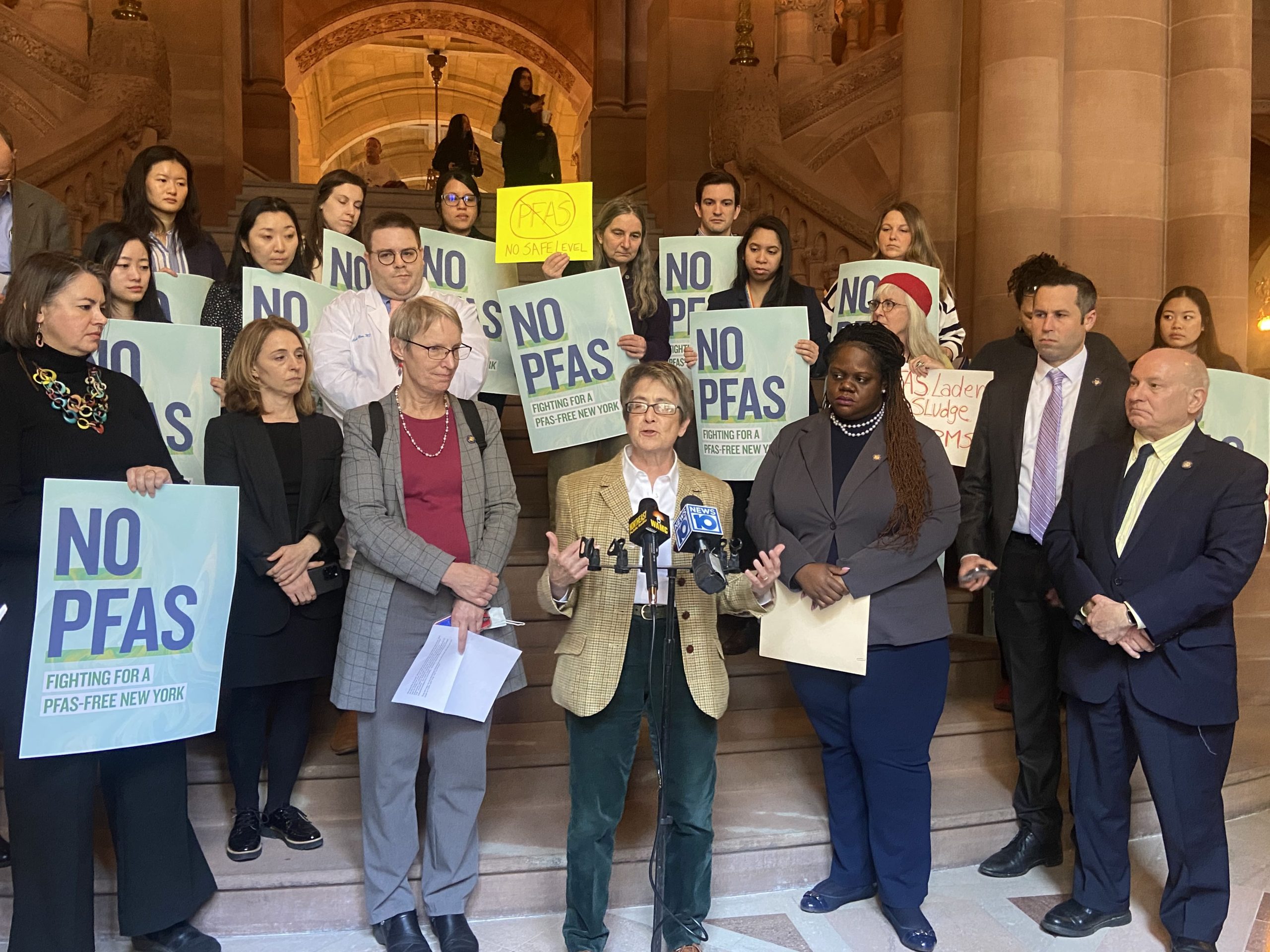
Assemblymember Deborah Glick, chair of the Assembly Environmental Conservation Committee, discusses a set of bills that would track, regulate and begin to eliminate per-and polyfluoroalkyl substances, or PFAS, in many common household products. These “forever chemicals” are found in water supplies, and can cause neurological development issues, cancer and other health issues.
On Tuesday Feb. 6 legislators and the PFAS-free New York coalition held a press conference at the Million Dollar Staircase advocating for a package of bills that work to eliminate and regulate the use and discharge of per-and polyfluoroalkyl substances, or PFAS, in common consumer products and waterways.
The package of four bills all have the common thread — to eliminate the use of PFAS in New York state.
The bills are as follows: S.5648-B/A.3556-B would limit the use of PFAS in consumer products, S.4265/A.6969 would eliminate PFAS in cosmetic products, S.3529/A.5990 does the same for menstrual products and the last bill, S.277-B/A.3296-A would create a system of tracking the levels of PFAS released in waterways.
PFAS are a group of chemicals that are used to make products that resist heat, oil, stains and water. However, these “forever chemicals” as they are often referred to, are used in many common, everyday products such as deodorant, shampoo, menstrual products, dental floss, paint, food packaging, nonstick cookware and textiles.
“This isn’t a new issue unfortunately, I am to this day taken aback by the fact that we know certain things create negative outcomes, yet we continue to engage in those practices. PFAS is just another example of that.” said Sen. Lea Webb, D-Binghamton, sponsor of S4265. “We know these chemicals create significant damage, including but not limited to, neurological development issues, cancer, loss of life and many other health issues.”
As it stands right now, there is no tracking of the sources of PFAS or the levels of PFAS in New York’s water systems. Bills S227B and A3296A, sponsored by Sen. Rachel May, D-Syracuse and Assemblymember Anna Kelles, D-Ithaca, respectively, address this issue. The goal of these bills is to identify the sources of PFAS via an annual testing regimen for all facilities that discharge waste.
“We cannot control, regulate or remove PFAS if we don’t even know where it’s coming from in the first place,” Kelles said. “All of these bills are very common sense, we know that they’re forever chemicals and we know they’re harmful to our health and the environment.”
Jennifer Rawlison, a resident of the city of Newburgh shared her experience with PFAS after it was disclosed that Stewart Air National Guard Base had been spilling PFAS into her community’s drinking water for decades.
“Most of my family, after blood testing, showed up in the 95th percentile for high levels of PFAS,” she said. “Many friends and neighbors in the city of Newburgh are already disadvantaged after decades of drinking and bathing in these chemicals. We cannot risk additional exposure through a routine shopping trip. New Yorker’s should be able to [live] without fear of exposing themselves or loved ones to toxic chemicals.”
Each industry that these bills target with regard to PFAS each individually address other concerns within their respective industries, which is why there is not one single bill addressing PFAS in consumer products. They each aim to mitigate other issues with cosmetics, menstrual products, and other home goods. The common thread throughout them all is that PFAS exists within a wide array of consumer products and they should be mitigated as much as possible.
“We have an opportunity this year to begin to unravel the net of PFAS that is encompassing our lives,” said Assemblymember Deborah Glick, D-Manhattan, who chairs the Assembly Environmental Conservation Committee. “Our only hope is for future generations, for us today to take the necessary steps to eliminate any production and future use of these forever chemicals.”









